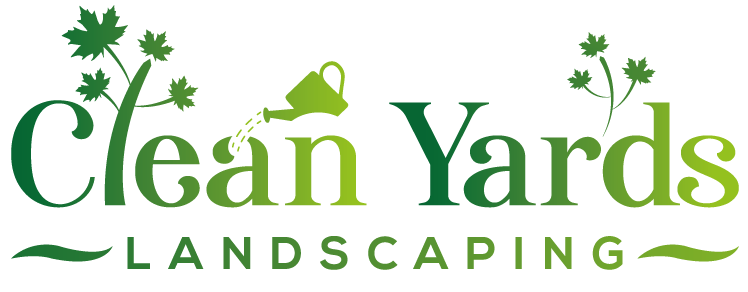Confused by Hydrangeas? Barrhaven Fall Pruning Guide
Quick Guide to Barrhaven Hydrangea Pruning:
- Identify First! Pruning depends entirely on whether your hydrangea blooms on Old Wood (Bigleaf, Oakleaf) or New Wood (Smooth, Panicle).
- Old Wood (Bigleaf/Mophead/Lacecap, Oakleaf): DO NOT prune in fall! Leave stems standing for winter protection. Prune only dead wood in spring.
- New Wood (Smooth/Annabelle, Panicle/Limelight): CAN be pruned in LATE fall after hard frosts. Cut Smooth types low (6-12"); cut Panicle types back by 1/3 or more for shape/size control.
- All Types Need: Consistent fall watering until freeze-up, 2-3 inches of mulch (keep away from stems), NO fall fertilizer.
- Confused? It's safer to wait until spring or get expert advice from local professionals.
Introduction: Hydrangea Hysteria in Barrhaven? Let's Sort Out Fall Pruning!
Okay, Barrhaven neighbours, let's chat hydrangeas! As the leaves turn gold across Ottawa, are you staring at your hydrangea shrubs with a pair of pruners and a *lot* of uncertainty? "Do I cut them back now? Will I chop off next year's blooms? Why did my friend in Greely say something totally different?"
If you're feeling a touch of hydrangea hysteria this fall, trust us, you're not alone! These beautiful landscaping stars can be genuinely confusing when it comes to pruning. Different types have different rules, especially when preparing them for our sometimes *very* frosty Ottawa winters. One wrong snip, and you might be wondering where your flowers went next summer.
But don't worry! This guide is here to clear things up *specifically* for our local gardening conditions. We'll cut through the conflicting advice (pun maybe intended?) and give you simple, actionable steps for fall hydrangea care right here in Barrhaven and surrounding areas like those covered by our Ottawa property cleanup service. Let's ditch the confusion, get your garden tools ready, and ensure your hydrangeas are set up for a spectacular show next year! Check out our Google My Business page for local reviews.
Why Bother Pruning Hydrangeas in the Fall (Or Should You)?
Okay, let's tackle that big question: Should you actually prune your hydrangeas in the fall here in Ottawa? The short answer is... *maybe*! It really depends on the type of hydrangea you have and your goals for your garden. It’s definitely not a one-size-fits-all answer, unlike deciding whether to finally tackle that pile of leaves during your property clean up.
So, why *would* someone prune hydrangeas in the fall?
- Tidiness: Let's face it, some gardeners prefer a neater look heading into winter. Trimming off those big, dried-up flower heads can feel like a satisfying final step in your autumn garden routine, similar to the other important tasks covered in a complete Manotick Fall Cleanup & Winter Prep Guide. It just *feels* tidier sometimes.
- Snow Load Concerns: In neighbourhoods like Manotick that can occasionally see significant snowfall, some worry that heavy, wet snow piling onto large dried blooms might bend or even break weaker stems. A light trim *might* reduce this risk for certain more delicate varieties.
- Specific Hydrangea Types: Here's where it gets tricky! Smooth hydrangeas (like the ever-popular 'Annabelle') bloom on *new wood* – meaning the growth produced in the *current* season. These types *can* often be cut back significantly in fall (or early spring) without sacrificing next year's flowers. Panicle hydrangeas (like Limelight) also bloom on new wood and offer more flexibility.
But hold your pruners! Here’s the strong case for *not* pruning most hydrangeas in the fall:
- Accidental Flower Removal: This is the number one reason to wait! Many of the most popular hydrangeas, especially the Bigleaf varieties (Hydrangea macrophylla – the classic pink or blue mopheads and lacecaps), set their flower buds on *old wood*. That means the buds for next year's flowers form on *last year's stems* during late summer and fall. If you prune these types back in autumn, *poof*, you've likely just snipped off most, if not all, of next year's glorious blooms! This is a very common mistake leading to disappointing flower displays, similar in frustration level to some Russell Commercial Summer Plant Care Issues (only happening right in your own backyard!).
- Valuable Winter Protection: Leaving the old stems and even the spent flower heads provides a surprising amount of natural insulation for the plant's sensitive crown (where the stems emerge from the ground) and the delicate flower buds forming lower down on the stems. Think of it as the plant's own fuzzy winter hat and scarf, protecting it against Ottawa's biting winds and damaging freeze-thaw cycles. Cutting them back essentially leaves these vulnerable parts exposed. You can always tidy things up and assess any winter damage later with a careful Vernon Spring Plant Health Scan.
- Wonderful Winter Interest: Don't underestimate the visual appeal! Those dried flower heads, especially when dusted with frost or snow, can look quite striking and add much-needed structure and interest to the otherwise dormant winter landscape.
The Bottom Line: For most hydrangeas commonly grown around Ottawa, particularly the Bigleaf types that bloom on old wood, waiting until spring to prune is usually the safest and best approach. In spring, you can easily identify and remove any dead wood (stems that are brittle and show no signs of green) without risking the removal of flower buds. Remember, healthy plants resulting from good overall garden care, maybe even borrowing tips from resources like Manotick Organic Lawn Care & Clay Soil Secrets, are naturally better equipped to handle winter stresses anyway.
If you’re standing there, pruners in hand, still utterly puzzled by your specific shrubs, don’t guess and risk losing those beautiful blooms! Seeking advice from professional Gardening & Landscaping Services can provide clarity and ensure your hydrangeas get the right treatment at the right time.
Know Your Hydrangeas: The Secret Weapon for Ottawa Gardeners
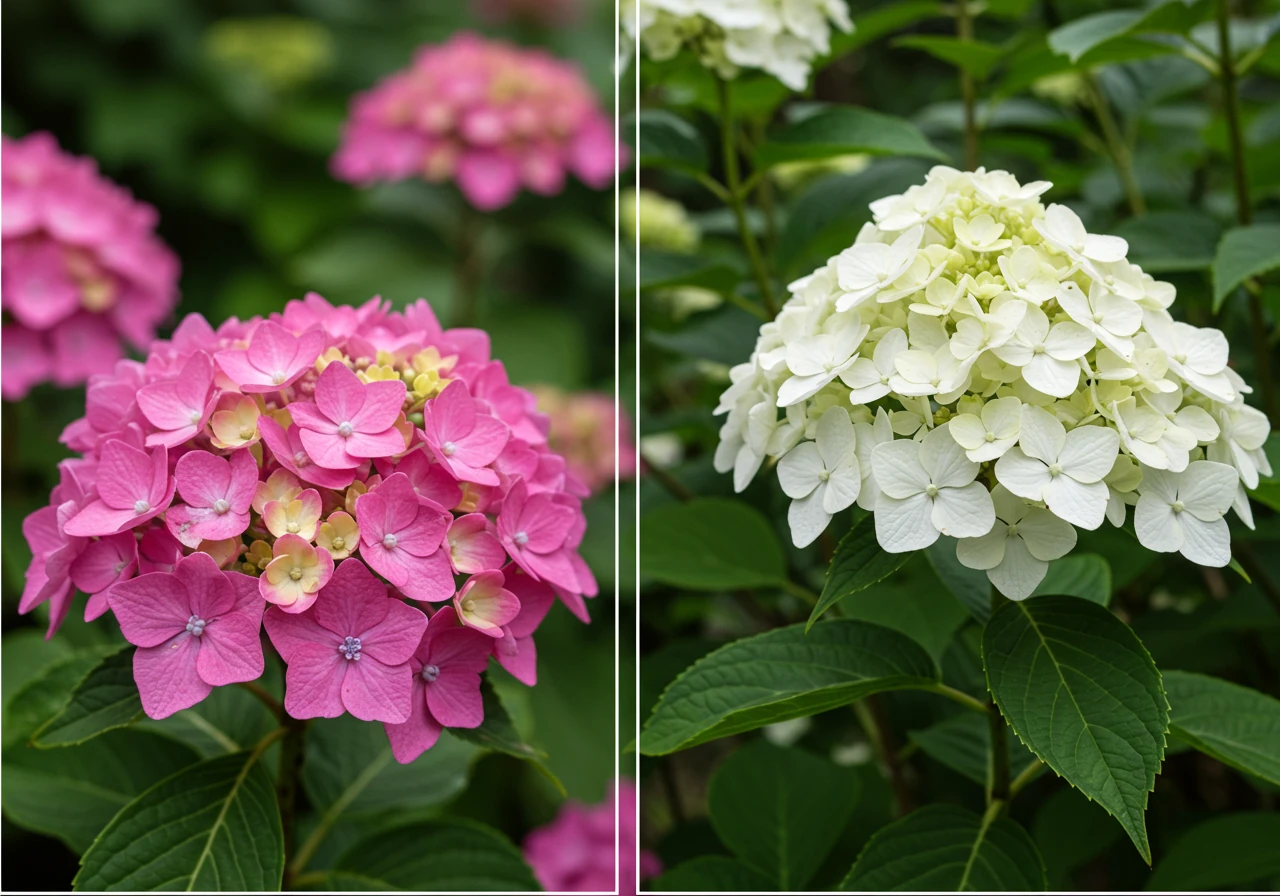
Alright, let's dive into the *real* secret behind happy hydrangeas in Ottawa: understanding *how* they bloom. It sounds a bit nerdy, we know, but trust us, this knowledge is your secret weapon against accidental flower massacres! It all boils down to two main categories: those that bloom on "old wood" and those that bloom on "new wood." Knowing which type you have drastically changes how you care for them, especially with pruning.
Think of it like this: imagine you're planning a party. Some friends need months of notice (old wood), while others are happy with an invite the week before (new wood). Mess up the timing, and you might have no guests... or in this case, no blooms!
Old Wood Bloomers: The Long-Term Planners
These hydrangeas are the meticulous planners of the plant world. They set their flower buds for *next* summer on the stems they grew *this* year, usually in late summer or early fall.
- What it means: The buds for next year's flowers are already present on the branches *right now* as fall rolls in.
- Key takeaway: If you prune these types back hard in the fall or even too early in the spring before you see new green leaf buds, you're literally cutting off next year's flower show. Oops!
- Why it matters in Ottawa (Zone 5): These buds need to survive our sometimes brutal winters. Often, the stems might die back partway due to cold, but the buds lower down (closer to the ground and potentially protected by snow cover) might survive. Waiting until spring allows you to see exactly which parts are dead and which parts carry those precious flower buds. Find out more about our climate challenges in our Privacy Policy context section (joking, but Ottawa winters are serious!).
- Common Examples:
- Bigleaf Hydrangeas (Hydrangea macrophylla): These are the classic pink or blue "mopheads" and delicate "lacecaps." Think of varieties like 'Endless Summer' (which *can* rebloom on new wood but often relies heavily on old wood buds surviving our winters) and older Nikko Blue types. Gardeners in exposed areas like parts of Richmond might find these particularly prone to winter dieback.
- Oakleaf Hydrangeas (Hydrangea quercifolia): Known for their unique leaves and cone-shaped flowers, these also bloom on old wood.
Deciding what to cut and what to leave during fall cleanup can be nerve-wracking with these types. If you're tackling leaf removal and general tidying as part of a Metcalf Garden Clean Up Service and are unsure about your hydrangeas, it's always safest to leave the stems intact until spring.
New Wood Bloomers: The Go-With-The-Flow Crew
These hydrangeas are much more laid-back. They produce their flower buds on the *current season's growth*.
- What it means: The plant sends up new stems in the spring, and flowers develop on those *same* stems later that summer.
- Key takeaway: You have much more pruning flexibility! Since flowers form on new growth, cutting the plant back in late fall, winter, or early spring won't remove the flower buds for the upcoming season. In fact, it can encourage stronger stems and vigorous growth.
- Why it matters in Ottawa (Zone 5): These are generally considered more reliable bloomers for our region because even if the stems die back completely to the ground over winter (which can happen!), the plant will send up new growth from the roots in spring and still flower that summer. Hallelujah!
- Common Examples:
- Smooth Hydrangeas (Hydrangea arborescens): Think 'Annabelle' with its huge white snowballs, or newer pink varieties like 'Invincibelle Spirit'. These are Ottawa workhorses.
- Panicle Hydrangeas (Hydrangea paniculata): These are very popular and hardy here. Varieties like 'Limelight', 'Little Lime', 'Quick Fire', and 'Pinky Winky' fall into this category. They typically have cone-shaped flowers that often age to pink or red. See examples in our gallery.
Tidying up around these robust types is less stressful during seasonal cleanups. Whether you're doing it yourself or using a Nepean Property Cleanup Service, cutting back spent stems from Panicle or Smooth hydrangeas in late fall is generally safe.
Simple Comparison:
| Feature | Blooms on Old Wood | Blooms on New Wood |
|---|---|---|
| Bud Formation | Buds set on last year's stems (in fall) | Buds set on this year's stems (in spring/summer) |
| Fall Pruning | Risky! Can remove next year's flowers | Generally safe, won't remove buds |
| Ottawa Reliability | Can be less reliable bloomers if buds freeze | Typically very reliable bloomers |
| Common Types | Bigleaf (Mophead/Lacecap), Oakleaf | Smooth ('Annabelle'), Panicle ('Limelight') |
Why This Matters More Than Your Neighbour's Advice!
Knowing this difference is crucial for success in Ottawa's climate. Our winters can be tough on those old wood buds. Choosing the right hydrangea type when planning new plantings is key – perhaps during a professional garden installation – focusing on new wood bloomers often leads to more consistent flowering year after year. Even the debris from different types might be handled slightly differently during a thorough Metcalf Yard Cleanup Service.
Still scratching your head looking at your specific shrub? Don't guess! Misidentifying your hydrangea is the fast track to disappointment. If you need help identifying your types or deciding on the best care strategy, considering professional Gardening & Landscaping Services can save you guesswork and potentially lost blooms. Knowing your wood type truly is the secret weapon!
Fall Pruning Step-by-Step: Tackling Your Panicle & Smooth Hydrangeas
Okay, you've done your homework and confirmed you're dealing with the easy-going members of the hydrangea family – the Smooth types (like 'Annabelle') or the sturdy Panicle varieties ('Limelight', 'Quick Fire', etc.). Fantastic! Unlike their old-wood blooming cousins, these guys flower on new growth, meaning fall pruning is definitely on the table here in Ottawa without risking next year's blooms. Let's get those pruners ready!
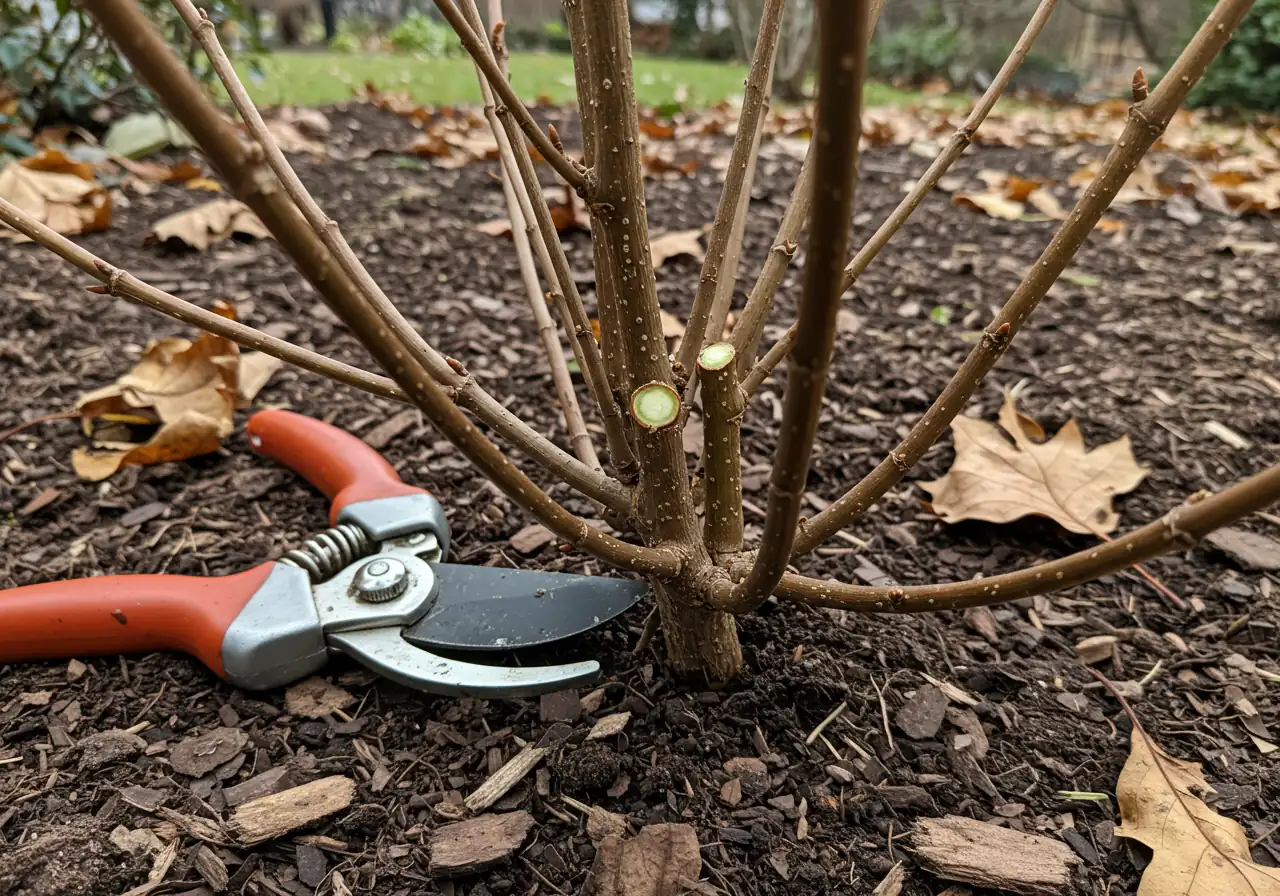
When's the Right Time to Chop?
Patience, eager beaver! You'll want to wait until *late* fall. Ideally, let your hydrangeas experience several hard frosts first. This signals to the plant that it's truly shutting down for the season. Typically, this means late October or into November around here. Keep an eye on the weather – sometimes areas just outside the city core, like Osgoode or Metcalfe, might reach this stage a little sooner than downtown. The goal is to prune when the plant is dormant but before heavy, persistent snow cover makes garden access tricky. Our contact form is always open for scheduling questions.
Gather Your Gear
Good news: you don't need a high-tech arsenal.
- Sharp Bypass Pruners: Your go-to tool for most stems. "Bypass" means the blades slide past each other like scissors, making a clean cut that helps prevent damage.
- Loppers: For thicker, woodier stems (especially on older Panicle hydrangeas), loppers give you more leverage.
- Cleanliness Counts! Make sure your tools are clean before you start. Wiping blades with rubbing alcohol between plants is a great habit to prevent spreading any potential plant diseases. Consider sharp, clean tools part of your essential material selection for successful gardening.
Fall Pruning: Step-by-Step for Smooth & Panicle Hydrangeas
Here’s the game plan. Remember, these hydrangeas are forgiving, so don't stress too much!
- Final ID Check: One last look – are you *positive* it's a Smooth or Panicle variety? When in doubt, leaving it until spring is always the safest bet.
- Choose Your Height: Decide what you want to achieve.
- Leave Some Structure: If you enjoy the look of dried flower heads in the winter landscape or want a bit more protection around the base, you can simply leave the stems as they are until spring, or just snip off the dried flower heads right below the bloom.
- Go Tidier/Encourage Vigour: If you prefer a neater look or want to promote strong new stems next year, you'll cut back lower.
- Cutting Smooth Hydrangeas (e.g., 'Annabelle'): These often benefit from a harder prune. You can cut the stems back to about 15-30 cm (6-12 inches) from the ground. This encourages robust new growth from the base next spring, which helps support those massive flower heads. Make your cuts just above a set of visible buds if possible.
- Cutting Panicle Hydrangeas (e.g., 'Limelight', 'Pinky Winky'): You've got options!
- Minimalist: Just remove the spent flower heads.
- Shaping/Strengthening: Cut the plant back by about one-third of its total height. This encourages branching and stronger stems.
- Rejuvenation/Size Control: Cut back more significantly if the shrub is overgrown or needs reshaping, perhaps down to 30-60 cm (1-2 feet). They handle this well. Aim to make your cuts just above a bud node (a little bump where leaves or stems emerge). Plants growing in well-amended soil, thanks to good soil preparation, will rebound quickly.
- Eco-Friendly Cleanup: Don't leave the prunings scattered! Gather all the cut stems. If they're free of disease, chop them up and add them to your compost pile – free organic matter! Otherwise, bundle them for your municipal yard waste pickup. Check City of Ottawa guidelines for specifics. Tidying up debris is a key part of fall garden care, reducing places for pests or diseases to overwinter – it's a standard practice in services like a Marionville Property Cleanup Service.
There you have it! Pruning these reliable bloomers isn't scary. Consistent care, right from the initial garden installation, helps them thrive year after year. And if managing these seasonal tasks feels like too much, remember options like using our customer portal can help organize your professional landscaping services easily. Happy pruning!
Hold Your Horses! Why Fall Pruning Spells Trouble for Bigleaf & Oakleaf Hydrangeas
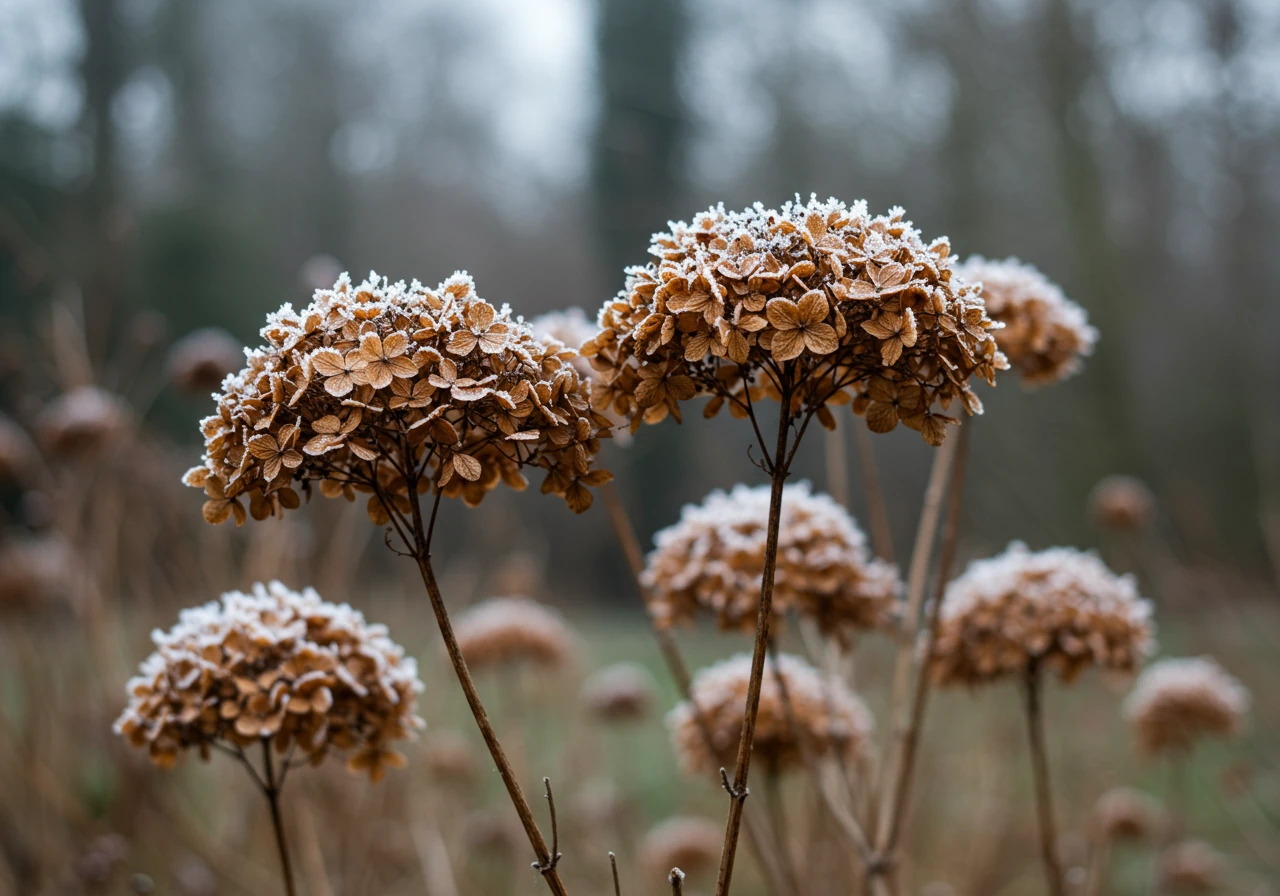
Whoa there, eager gardener! Before you take those shiny pruners to your beautiful Bigleaf (the classic pink or blue mopheads and lacecaps) or stunning Oakleaf hydrangeas this fall, let's pump the brakes. We know, we know – the urge to tidy everything up before winter hits is strong, maybe even stronger after completing a big project like a new sod installation. But for *these specific types* of hydrangeas, fall pruning is like cancelling next summer's flower party before it even starts. Seriously!
Here’s the scoop: Bigleaf and Oakleaf hydrangeas are the ones that bloom on *old wood*. Remember that from our previous section? This means they cleverly formed the flower buds for next year’s show way back in late summer and early fall, hiding them along those existing stems. If you go trimming those stems back now, guess what you're cutting off? Yep, next year's gorgeous blooms. *Snip snip... sob sob*.
In our lovely but sometimes frosty Ottawa Zone 5 climate, this is super important. Those buds are already facing a challenge just surviving the winter cold. Leaving the stems intact provides crucial insulation. Think of the spent stems and even the dried flower heads as the plant's natural winter coat, helping protect the lower, more viable buds from harsh winds and freeze-thaw cycles. Cutting them back strips away this protection, leaving the buds exposed and much less likely to survive until spring. Comprehensive lawn care practices help plants overall, but these specific hydrangeas need their stems left alone through winter.
"But they look so messy!" you might say. We hear you. However, try to reframe that 'mess' as 'winter interest'. Honestly, those dried flower heads look quite architectural and lovely dusted with frost or snow – you see them adding character to winter gardens all through areas like Kars and Vernon. They provide texture when everything else is bare. Resist the urge to tidy them up like you might during a full Metcalf Property Cleanup Service; these specific shrubs need different treatment. Even if you hire professionals for seasonal tidying, like a Marionville Property Cleanup Service, make sure they know *not* to prune these hydrangeas in the fall.
Wait until spring. Then you can easily see what parts of the stems are truly dead (brown and brittle all the way through) and which parts are alive (showing green buds). You can snip off the dead bits then, without sacrificing those precious flowers. Leave those stems intact – your hydrangeas will send you a floral Thank You next summer!
Beyond the Cut: Essential Fall Care for Thriving Ottawa Hydrangeas
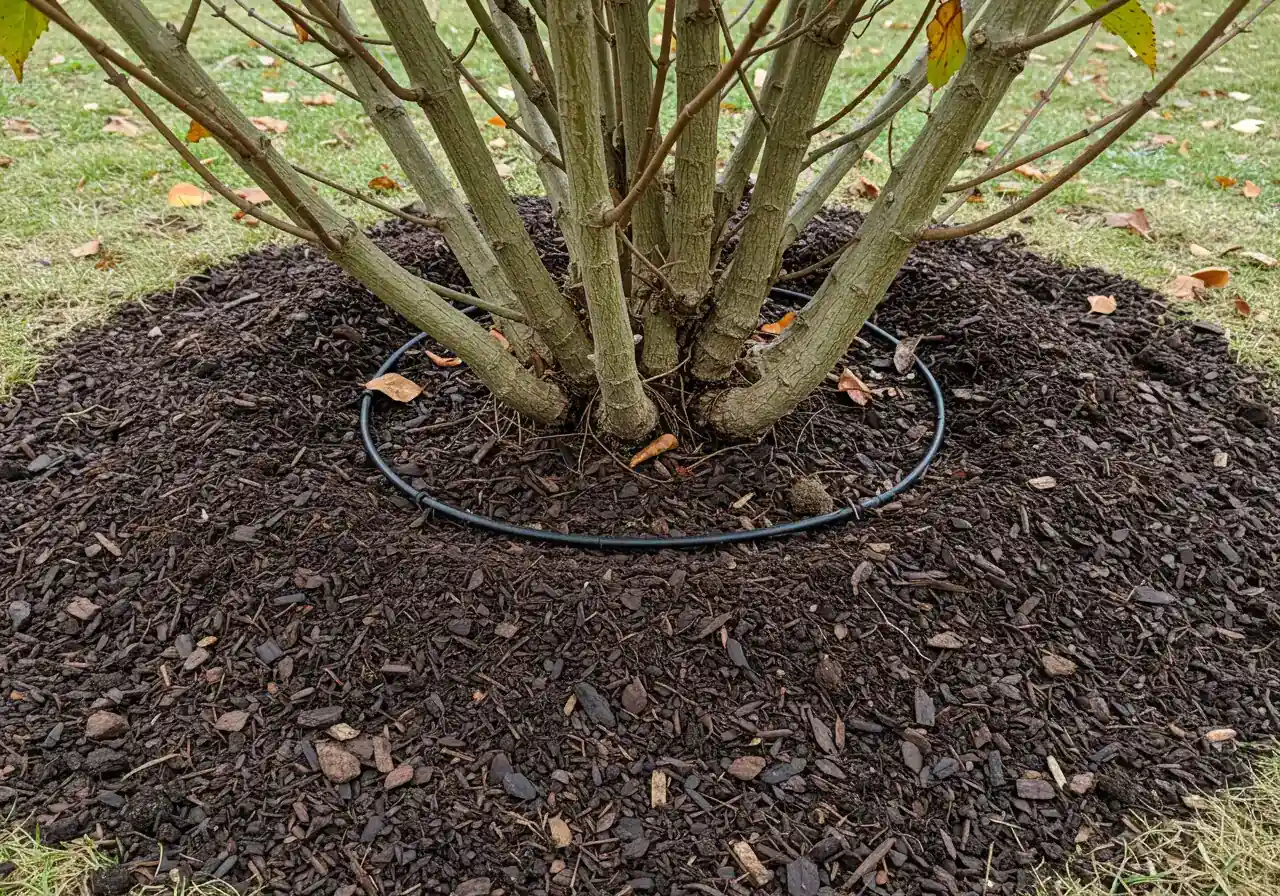
Alright, so we've sorted out the great pruning debate (mostly "wait till spring" for the popular types!). But getting your hydrangeas through an Ottawa winter and ready for a spectacular comeback involves a bit more than just putting the pruners away. Think of it as tucking them into bed properly – a little extra care now pays off big time next summer. Let's dive into the other essential fall tasks!
Water Wisely, Not Wildly
As the days get cooler and shorter, your hydrangeas won't need nearly as much water as they did in the summer heat. However, don't cut them off completely just yet! They still appreciate consistent moisture, especially if we get a dry fall.
- Tip: Keep watering moderately until the ground freezes solid. Aim for soil that's moist, not soggy. Well-hydrated roots are happier roots heading into winter dormancy. This is particularly important for plants stressed by summer conditions or establishing new roots after services like planting or garden maintenance. Good hydration contributes to overall plant resilience.
Mulch is Your Hydrangea's Winter Blanket
Think of mulch as a cozy duvet for your hydrangea's roots. Applying a layer of organic mulch in late fall *after* the ground has started to cool but *before* it freezes solid is super beneficial.
- Why Bother? Mulch helps insulate the soil, preventing those damaging freeze-thaw cycles that can heave plants right out of the ground. It also retains moisture and, as it breaks down, improves soil structure – a real bonus in areas with heavy clay soil, like parts of Greely. Healthy soil means healthier plants! For info on soil health, check resources from organizations like the Rideau Valley Conservation Authority.
- Eco-Friendly Choices: Forget the dyed wood chips! Shredded leaves (nature's free gift!) or compost are fantastic options. Gather them up during your fall property clean-up and put them to good use.
- How-To: Apply a layer about 5-8 cm (2-3 inches) deep around the base of the plant, extending out to the drip line (the edge of the branches). Crucial tip: Keep the mulch pulled back a few inches from the actual stems to prevent rot and discourage critters from nesting too close.
Hold the Fertilizer!
Seriously, put that fertilizer bag away for your hydrangeas in the fall. Fertilizing late in the season encourages tender new growth that won't have time to harden off before winter hits. Our Ottawa frosts will zap that new growth instantly, wasting the plant's energy and potentially causing damage. Save the feeding for spring when the plant is actively growing again.
Winter Protection: For the Divas Only
Here's where knowing your hydrangea type matters *again*.
- Hardy Heroes (Panicle & Smooth): Your 'Limelights', 'Annabelles', and other new-wood bloomers are generally tough cookies. They typically don't need extra winter protection in Ottawa beyond a good layer of mulch. Hallelujah!
- Tender Treasures (Bigleaf & some Oakleaf): These old-wood bloomers, especially the classic blue and pink Bigleaf types, often need a helping hand to protect those precious flower buds. If you're dreaming of those colourful blooms, consider these steps *after* the leaves have fallen but before deep snow:
- Leaf Cage: Create a cylinder of chicken wire or snow fencing around the plant. Fill it loosely with shredded leaves or straw. This provides excellent insulation. Remove the cage and leaves gradually in spring after the threat of hard frost has passed.
- Burlap Wrap: Gently tie the branches together and wrap the entire shrub loosely with burlap. This shields buds from harsh winds and sun scald.
- Rose Cones: For smaller plants, styrofoam rose cones (with ventilation holes poked in!) filled lightly with leaves can work, though the cage method often provides better air circulation.
Taking these extra steps in the fall sets the stage for healthier plants and contributes to those stunning landscape transformations come springtime. It ensures your hydrangeas not only survive but truly thrive. Feeling overwhelmed by the list? If winterizing your garden feels like too much, you can always get professional help. Feel free to review our service details and Terms and Conditions or simply book a free estimate to discuss your specific needs. A little fall TLC goes a long way for beautiful blooms next year!
Barrhaven Hydrangea Pruning Cheat Sheet
Hydrangea panic setting in? Take a deep breath! Here's the super-quick rundown for keeping your Barrhaven beauties happy this fall. Getting this right is simpler than navigating Hunt Club during rush hour, we promise!
Step 1: KNOW YOUR TYPE! (Seriously, this is everything!)
- Is it a Bigleaf (Mophead/Lacecap) or Oakleaf? These bloom on OLD WOOD.
- Is it a Smooth ('Annabelle') or Panicle ('Limelight', 'Quick Fire')? These bloom on NEW WOOD.
If You Have OLD WOOD Bloomers (Bigleaf/Mophead/Lacecap, Oakleaf):
- FALL PRUNING? NO! Absolutely do not prune these in the fall. Put the pruners down!
- WHY? You'll cut off next year's flower buds which are already hiding on those stems.
- WHAT TO DO: Leave the stems and dried flowers standing all winter. They provide natural protection. Tidy up only dead wood in the spring once you see new green buds emerging.
If You Have NEW WOOD Bloomers (Smooth/Annabelle, Panicle/Limelight):
- FALL PRUNING? YES, you can! Wait until late fall, after several hard frosts (usually late Oct/Nov).
- Smooth ('Annabelle' types): Cut stems back fairly low, to about 15-30 cm (6-12 inches) from the ground. This encourages strong new stems next year.
- Panicle ('Limelight' types): Cut back by about one-third to shape the plant and encourage sturdy growth. You can cut back harder if needed to control size.
Essential Fall Care for ALL Hydrangeas in Barrhaven:
- Water: Keep the soil consistently moist (but not soggy!) until the ground freezes solid.
- Mulch Magic: Apply a 5-8 cm (2-3 inch) layer of organic mulch (shredded leaves are great!) around the base *after* the ground has cooled but *before* it freezes hard. Proper fall mulching and edging helps insulate roots. Crucial: Keep mulch a few inches away from the plant stems!
- Hold the Fertilizer: Absolutely no feeding hydrangeas in the fall. Wait until spring.
- Tidy Up: Rake up fallen leaves and debris around the base to discourage pests and diseases. Tackling the whole yard can be a big job; sometimes getting help from an Ottawa yard cleanup service makes sense.
Still Baffled by Your Blooms?
Don't guess and risk losing those gorgeous flowers! Correct identification is key. If you're staring at your shrub with uncertainty or just want a hand getting your garden ready for winter, it's easy to book a free, no-obligation estimate. We strive to provide clear, helpful advice for local gardens and always appreciate hearing about your estimate experience so we can keep improving!
Frequently Asked Questions: Ottawa & Barrhaven Hydrangea Head-Scratchers
Ah, the classic Ottawa Zone 5 lament! Bigleaf hydrangeas bloom on *old wood*, meaning the buds formed last fall. Our cold winters often freeze those delicate buds, especially if they weren't protected. Even if the plant looks healthy and green, the flower buds might have been zapped. Waiting until spring to prune only dead wood is crucial!
It's tricky in our area! Blue flowers need acidic soil (low pH), while pink prefer alkaline (high pH). Much of Ottawa and surrounding areas like Kenmore have naturally alkaline soil, making vibrant blue difficult to achieve consistently without constant soil amendment (like applying aluminum sulfate). It's often easier to embrace the pink or choose white varieties like Annabelle!
For dependable blooms year after year despite our winters, you can't beat Panicle hydrangeas (like 'Limelight' or 'Quick Fire') and Smooth hydrangeas ('Annabelle' types). They bloom on *new wood*, so winter cold doesn't usually damage the flower buds. They're superstars in gardens from Barrhaven to Winchester! Check recommendations from the Ottawa Horticultural Society for more hardy plant ideas.
Some leaf colour change and minor spotting is normal as hydrangeas go dormant. However, significant spotting or powdery mildew could indicate fungal issues. Ensure good air circulation, clean up fallen leaves thoroughly – a task often included in a Marionville Yard Cleanup Service – and avoid overhead watering. Persistent problems might need targeted comprehensive garden maintenance.
Don't panic! You likely removed most of next summer's flower buds, so expect few (if any) blooms this year. But the plant itself should survive if the roots are healthy. It will focus on leaf growth. Some newer 'reblooming' types *might* even produce a few late flowers on new growth. Check our gallery for inspiration on how lush gardens can look!
Protecting the roots and base! Applying a good layer of mulch after the ground cools but before it freezes hard is key for all types. For tender Bigleafs, leaving stems standing is vital. Also, ensure the area is free of fallen leaves and debris to prevent disease overwintering – something a focused Marionville Garden Clean Up Service can assist with. Our Ottawa garden clean up service covers this too.
Conclusion: Confident Hydrangea Care for Your Barrhaven Garden
Phew! You've navigated the sometimes bewildering world of hydrangea care, specifically for our unique Ottawa climate. Hopefully, the hydrangea hysteria has subsided, replaced by a cool confidence. Remember, the *biggest* secret weapon in your gardening toolkit is knowing whether your hydrangeas bloom on old wood or new wood. Get that right, and you're halfway to avoiding any accidental bloom-ectomies!
Mastering the difference means understanding why those gorgeous Bigleaf types need their stems left alone through winter, while the tough Panicle and Smooth varieties give you more pruning freedom come late fall. Add in proper watering, a cozy mulch blanket, and holding off on that fall fertilizer, and you're setting your shrubs up for success right here in Barrhaven.
You *can* conquer hydrangea care! It just takes a little know-how tailored to our chilly winters. But hey, we get it – fall is busy! If identifying your shrubs still feels like horticultural homework you don't have time for, or if you'd rather leave the mulching and tidying to the pros, we're here to help. Serving Barrhaven, Nepean, Manotick, Greely, Richmond, and surrounding communities, our team at Clean Yards can handle all your fall landscaping needs.
Take the guesswork out of garden care. Give us a call at [Your Phone Number - Placeholder] or visit cleanyards.ca to book your free estimate today. Let's get your garden tucked in perfectly for winter! Happy gardening!
